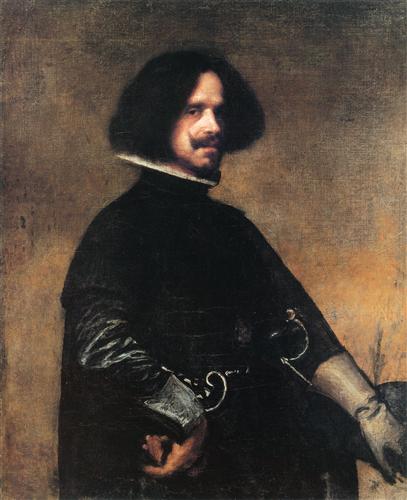Watch my new video here:
This stunning portrait was created by Diego Velázquez in 1650. Velázquez was a Spanish Baroque painter who was born in Seville, Spain in 1599. Later on in his illustrious career, he became court painter to Philip IV, the important monarch of Spain and her colonies. Besides court portraits (i.e. Las Meninas, Portrait of Philip IV), Velázquez painted papal figures and scenes from Greek mythology. In this painting, Pope Innocent X (papacy 1644-1655) looks menacing, cutthroat, and too ambitious for his own good. Innocent’s real name was Giovanni Battista Pamphilj, and he belonged to a wealthy and prominent family in Italy. The life-like quality of this painting was a little too accurate; Pope Innocent X reputedly said, “All too true!” Indeed, the portrait is not idealized or superficial at all; by contrast, every ruddy feature of Innocent’s face is depicted with a realism reminiscent of ancient Roman verism. The truthful features also attest to the Spanish taste for bodega paintings, or scenes that show everyday life and people that are not perfect.

Self-Portrait of Velazquez
The painting is currently displayed in the Galleria Doria Pamphilj in Rome, the family museum of the Pamphilj that also houses works by Titian. The acorns on the back of the Pope’s chair are symbols of the Pamphilj family; this is similar to the symbols of bees shown on the “Allegory of Divine Providence and Barberini Power” ceiling fresco painted by Cortona in 1633. The portrait was meant not only to show the power of the Papacy (i.e. the Warrior Pope, Julius II), but also the influence of the Pamphilj family. The other notable aspect of this painting is the dominant blood-red tones in the image. In general, Baroque images are swirling, have a diagonal composition, and have rich colors (i.e. the midnight black in chiaroscuro and tenebrism). However, instead of black as a stark background, the lush red serves as a backdrop for the Pope. The red emphasizes the menacing quality of Innocent (i.e. red blood) and his desire for power. Note, for the example, the way the Pope’s bejeweled hands clutch the arms of his gold chair, a subtle dig by Velázquez on his apparent ambition. Additionally, the Pope looks at the viewer, confronting us, and making us afraid of the capabilities of this so-called “religious” figure. This direct eye contact is similar to the dwarf, Don Sebastian de Morra, in the Los Bufones series (as well as Margarita in Las Meninas). However, instead of anger, there is cold desire for power juxtaposed against the supposed “holy” character. Of course, one cannot mention this image without discussing Francis Bacon’s “Study after Velázquez's Portrait of Pope Innocent X.” These frightening images show a distorted Pope screaming in between dark purple and black colors. These pictures are scary, especially the gaping mouth looking like a void into the darkness. Interested in learning about black holes? Here is an interesting article by National Geographic.



